
Sculpture by Keiichi Tanaami at NANZUKA UNDERGROUND, Shirokane, Tokyo.
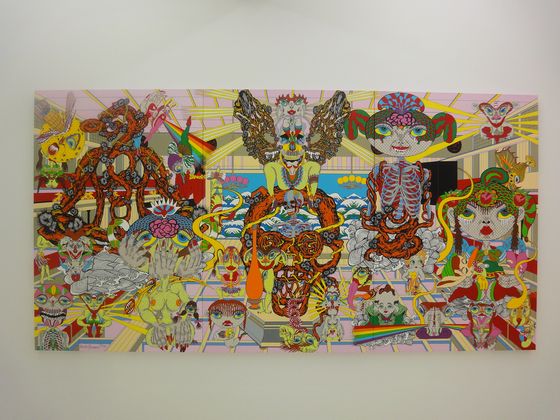
Painting by Keiichi Tanaami at NANZUKA UNDERGROUND, Shirokane, Tokyo.
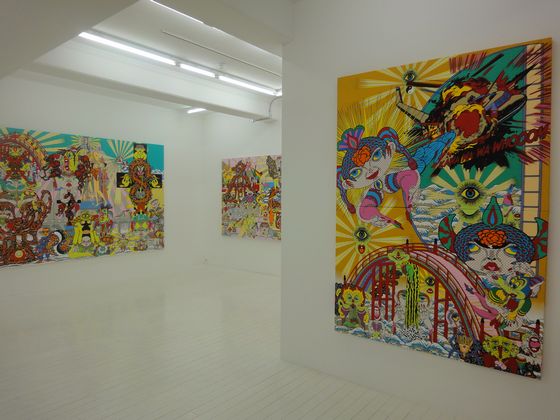
Exhibition view of “Dividing Bridge” at NANZUKA UNDERGROUND, Shirokane, Tokyo.
?The derogatory term “riverbed beggars” was also commonplace, and deeply related to the expansion of the theater. The space beneath the bridge was believed to belong to another world, separate from reality, an alien world removed from every order, system and institution. Eerie, dubious freak show huts lined the banks, exposing the underbelly of society with sideshow attractions featuring the Long Neck Woman, snake ladies, dwarves and other “freaks” bustling in the dark. That strange space covered by the bridge as its roof was also a spot for hiding dead bodies and a secret gathering place for prostitutes. Brooding lovers, as an extreme breakup at the end of much languish, would throw themselves from bridge railings in miserable double suicides. No matter how you look at it, death is strongly related to and is a distinct feature of bridges in Japan.”
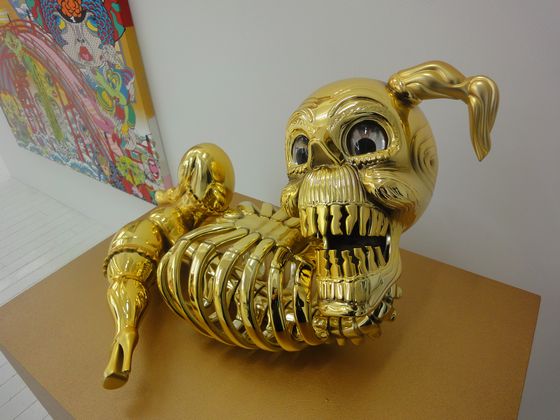
Exhibition view of “Dividing Bridge” at NANZUKA UNDERGROUND, Shirokane, Tokyo.
The red bridge appears as a major motif in the main piece of the exhibition, Bridge to the Other World, a large-scale painting measuring 2x3m, as well as in his new sculptural works. These bridges always appear along with skull characters. Along with the red bridge in Bridge to the Other World, celebrated cartoon characters Atom and Popeye appear together with numerous deformed specters, monk ghosts, little girl ghosts and skeletons. In one sculpture, he recreates in model form a figure that appears in the painting, a skeletal girl carrying a golden, glowing baby in her arms as she crosses over a red bridge. Tanaami says that his personality morphs dark past experiences into positive expressions, but the world drawn here is Tanaami’s ultimate paradise, transcending good and evil, affliction and fear.
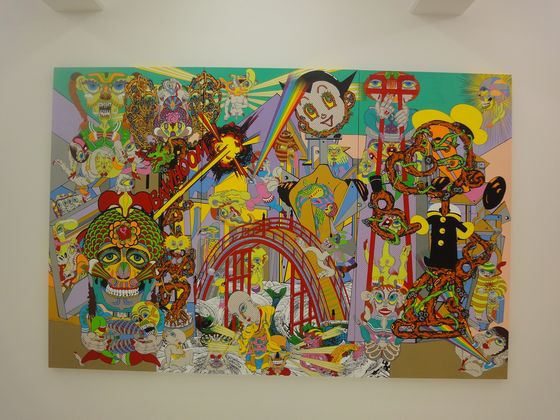
Exhibition view of “Dividing Bridge” at NANZUKA UNDERGROUND, Shirokane, Tokyo.

Exhibition view of “Dividing Bridge” at NANZUKA UNDERGROUND, Shirokane, Tokyo.

Exhibition view of “Lost and Wandering Bridge Series” at NANZUKA AGENDA, Shibuya, Tokyo.
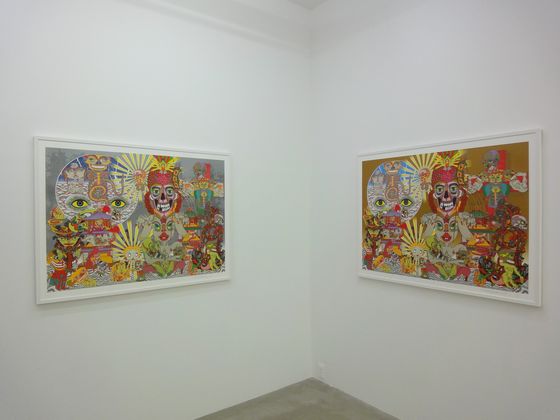
Exhibition view of “Lost and Wandering Bridge Series” at NANZUKA AGENDA, Shibuya, Tokyo.
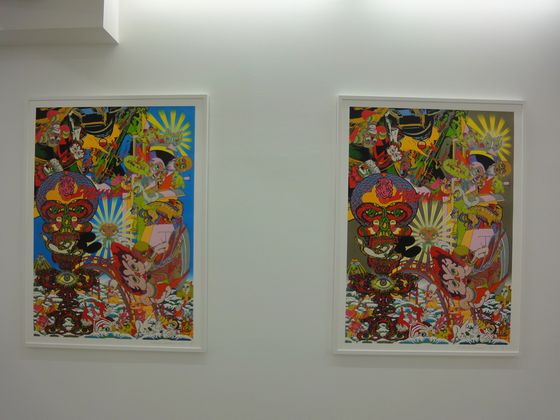
Exhibition view of “Lost and Wandering Bridge Series” at NANZUKA AGENDA, Shibuya, Tokyo.
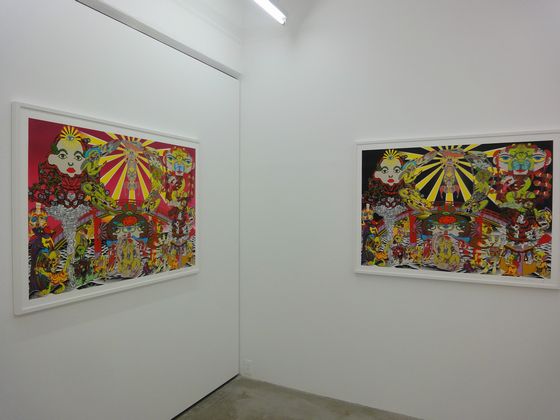
Exhibition view of “Lost and Wandering Bridge Series” at NANZUKA AGENDA, Shibuya, Tokyo.
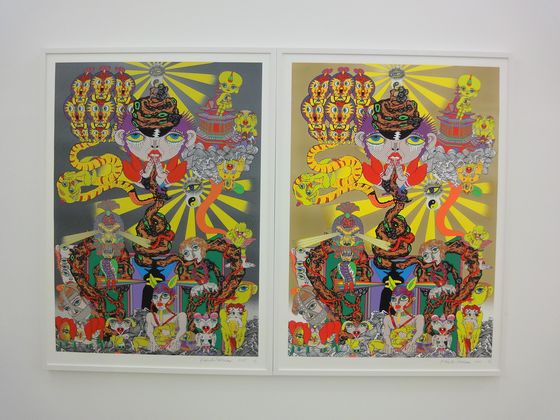
Exhibition view of “Lost and Wandering Bridge Series” at NANZUKA AGENDA, Shibuya, Tokyo.
text by Rasa Tsuda
Exhibition Info (Dividing Bridge)
Date: Oct 8, 2011 – Nov 12, 2011
Place: NANZUKA UNDERGROUND (Shirokane)
Address:Shirokane Art Complex #2F, 3-1-15 Shirokane Minatoku Tokyo, Japan
Exhibition Info (Lost and Wandering Bridge Series)
Date: Oct 22, 2011 – Dec 11, 2011
Place: NANZUKA AGENDA (Shibuya)
Address: SPP Ginza Building 8F, 2-4-9, Ginza, Chuo-ku, Tokyo, Japan
*NANZUKA UNDERGROUND placed in Shirokane will?close in Dec 2011 and moving back the main gallery to NANZUKA AGENDA in Shibuya. The gallery name will be simply NANZUKA.


